Berkovitsa Municipality is in Montana Province, northwestern Bulgaria, on the northern slopes of the western Balkan Mountains. It was first mentioned by name in Ottoman documents dating from 1488.
History of Apriltsi Municipality
The valley of Novosel (600 m above sea level) is located in the northern folds of the Balkan Range, along the Ostreshka and Vidima rivers.
Far back in the centuries, Thracians and Romans lived here. Only in the western part of the Novoselska hollow, 15 settlement mounds have recently been found. Burial sites were discovered in the excavation of 2 of them in the Chukla area. According to the gray Thracian pottery discovered in them, archaeologists refer the burial sites to the 4th – 3rd century BC. It is assumed that along the upper river valley of the Rositsa and Vidima rivers lived Thracians of the tribal tribe, which mined gold at the springs of the Semova River at the peak of Zheltets.
During the Roman rule, an important road connecting the provinces of Moesia and Thrace passed through the Novosel valley. To protect it, the Romans erected strongholds at Golyam Ostrets Peak and the Rusali Pass. This time it branches off at Nikopolis ad Istrum (Nikyup village, Turnovsko) from the main Roman road that connects Nove (Svishtov) and Philippopolis (Plovdiv) and heads along the valley of the Rositsa and Vidima rivers to the fortress of the present-day village of Gradnitsa. From there, through the Boaz, it entered the Novosel valley and through the Rusali Pass to the valley of the river Tazha, descended to Thrace. This road is not used today, but it is a great opportunity for pedestrian crossings.
Refugees from the Turnovo region after the fall of Bulgaria under Ottoman rule date back to the beginning of today’s settlement. Since then, they have been named after localities such as “Bolyarsko” and “Tsarevo Vine”. Later, in the eighteenth century a new wave of Bulgarians from Sevlievo, Turnovo and even from the southern part of the country fled to the mountain because of the Kurdzhali raids. Already during slavery, river waters were used to ride many watermills, sawdust and sawmills. This defines the first name of the village of Takhtadzhikoj – Daskar village. According to the legend, the robbers attacked the village – burned it and killed the majority of the population. Those who managed to escape the mountain returned in time. They rebuilt the village and named it Enikyoy – Novo selo.
During the Renaissance, due to its good geographical position, Novo Selo stands out as a handicraft – trade and cultural – educational center of the valley and the neighboring villages.
Here as early as 1812. a cell school and a church were opened, and since 1850. there is also a secular school. The economic uplift and the free-spirited spirit of the Balkan people make Novo Selo one of the centers of the April Uprising. In 1872. Levski organized a secret revolutionary committee.
In April 1876. only the valley of Novosel rebels against the robber. For nine days the freedom in this region has been celebrated, but the locals pay for it with a lot of blood and 722 buildings burnt. The voivode of Tsanko Dyustabanov, who came to the rescue of Gabrovo’s troops, also died. Much of the surviving population is moving out.
The April Novoselsk Uprising is a high point in the long-standing struggle for the liberation of Bulgaria from Ottoman yoke.
According to Prof. Marko Semov, beauty from the Balkans whispers legends of famous and unknown heroes from every place in the Novoselska valley, which is the “best corner of the earth”. The image of Tsanka Dustabanov, who declares before the extraordinary Turkish court, comes to life is a disgrace to me ”and“ So we won ”.
They bring to life the newcomers with cherry marbles at the positions of Debnevcia Boaz, who announce with them their passionate love for freedom and the determination to die for it. Here, in 1901, on the occasion of the 25th anniversary of the uprising, the Black Monument was built with funds provided by Alexander Batemberg.
Going back in time, it reminds us of those indescribable days when ordinary shepherds and diggers, artisans, secretly before the Apostle of Liberty Vasil Levski over the creeping scabbard and sword, declare their oath. they cut like the state tortured me, I won’t ask for anything ”and they turn into rebels, waiting for the appointed hour… as if now we hear Stefan Peshev’s memory words“ Sell the fields, buy a rifle. In preparation for the uprising, the blacksmiths make rifles and swords, marangozchi cherry balls. The students, led by Daskal Nikola Dabev, cast bullets. The iron is burned, the weapon is made. Gunpowder is procured, the lead is taken from the shops, and expensive things from the church are taken – all for the cause.
The uprising became a measure of morality for all – men, children of children – to remain in history, as proud and “disobedient people” who shed their blood on the Debnevsky and Hradnitsa boas, under Mara Guidik, hanging on gallows in Sevlievo and Tarnovo, came and stood the Bulgarian in the Turkish Zandans, in Diyarbakir and on the island of Cyprus.
“Nine Swallows of Freedom” – this is how the 1876 Novosel republic can be defined, which lasted only 9 days, but had its military and civilian authority a “military triumvirate.” This is one of the features that characterize the uprising in the Northern Balkans. There is no betrayal here. In the flames of the uprising, more than 160 insurgents were killed in defense of the republic, 8 were hanged and 9 were exiled. 772 houses were burned according to Turkish statistics. A new village becomes a huge smoky ash.
Historians of the uprising are: Ivan Marangozov, Prof. N. Kovachev, Mihail Lazarov, Marin Grashnov and others.
In the years after the uprising, the distinguished population in the Novoselsky region has erected many monuments, made fountains in memory of the heroes since 1876. In honor of the 100th anniversary of the heroic Novosel Uprising by Decree 704 / 20.05.1976, the State Council of the Republic of Bulgaria announced the new town of the Republic of Apriltsi, deleting the former villages of Novo selo, Ostrets, Zlata reka and Vidima.
The work of newcomers will always shine with the bright glow of revolution. He will be praised today and by generations with deep appreciation and reverence.
In 1976. in honor of the 100th anniversary of the April Uprising, the four villages – Novo selo, Vidima, Ostrets and Zla reka unite in the town of Apriltsi. The importance of Apriltsi as an attractive mountain resort is increasing.
Geography of Apriltsi Municipality
The climate is moderate to mountainous – with prolonged autumn, significantly cooler summers and mild winters – until late March. Due to the closed nature of the valley, stormy winds rarely blow, and no snow falls in winter. Rarely do fogs, sunny days predominate, the air is fresh, rich in oxygen.
In the cool wooded slopes of the mountain, beech and hornbeam, maple, rustle, brechina, cherry, larch, Douglas, white and black pine are most commonly found. In the forests live wolf, fox, brown bear, wild cat, deer, rabbit, squirrel, gold, hedgehog, various types of snakes and lizards. Hawks and falcons hover high in the sky above Apriltsi, and storks and swallows nest near the houses. In the sparkling waters of the rivers Vidimska and Ostreshka swim trout, barbel, mullet, stubble and gray.
From Apriltsi it is easy to reach the Central Balkan National Park, whose border runs through the territory of the municipality. One of the park’s nine reserves – the North Jendem Biosphere Reserve is among the area’s attractions. Just above the town rise the peaks Botev (2376 m), Maragidik, Ostrets, Beech Mound. Nature connoisseurs come here to enjoy the wonderful beauty of the mountain – the kingdom of eagles, wild goats, rare plants.
The diverse terrain of the Central Balkans, with an altitude difference of up to 1800 m, provides a variety of habitats that have made it a treasure trove of wildlife.
North Dzhendem Reserve – is the highest located reserve in the Central Balkan National Park, protecting an extremely wild, inaccessible and beautiful part of the Balkan Mountains around the springs of the Vidima River. North Dzhendem covers the northern vertical slopes of Botev Peak. Inaccessible rock belts, short and steep watersheds, peaks with reverse slopes, rock bridges, gills, precipices, numerous waterfalls and extensive grassy flatness all testify to unique geological processes. Almost 2/3 of the reserve is covered with steep centuries-old forests. It preserves subalpine rock and forest habitats. The ancient beech and beech – fir forests are characteristic. Rare and endangered species survived only in this natural fortress and nowhere else in Bulgaria. The unusual community of Siberian juniper, myrtolithic rhododendron and blueberry has been preserved, as well as the only urum prussic field in the world. The connection to the other reserve – “Djendema”, makes it part of a vast “Promised Land” – a refuge of wild goat, bear, wolf, red deer, roe deer, rock eagle, falcon – rogue and rock climber.
They call the reserve Dzhendem (hell), but he and his surroundings have gathered the divine beauty of nature in the waterfall “Paradise Spray”, the area “Paradise”, “Vidima Spray …” There is also a hut “Paradise”.
Berkovitsa Municipality covers an area of 464 sq km. It is the southernmost municipality of Montana Province. It lies on the northern slopes of the western Balkan mountains, with hilly terrain broken up by streams flowing through its territory. The area is rich in wildlife and vegetation, with blueberries and raspberries filling the stomachs of many a wanderer during long summer afternoons.
There are 20 villages and towns in the municipality with a total population of about 18,000 people. Almost 75% of the population, over 13,000 people, reside in the town of Berkovitsa. Barziya, population 1400, and Zamfirovo, population 1200, are the only other villages of any size. None of the rest rises above 300 souls. They include Balyuvitsa, Bistrilitsa, Bokilovtsi, Borovtsi, Chereshovitsa, Gaganitsa, Komarevo, Kostentsi, Kotenovtsi, Leskovets, Mezdreya, Parlichevo, Pesochnitsa, Rashovitsa, Slatina, Tsvetkova Bara, and Yagodovo.
Economy of Apriltsi Municipality
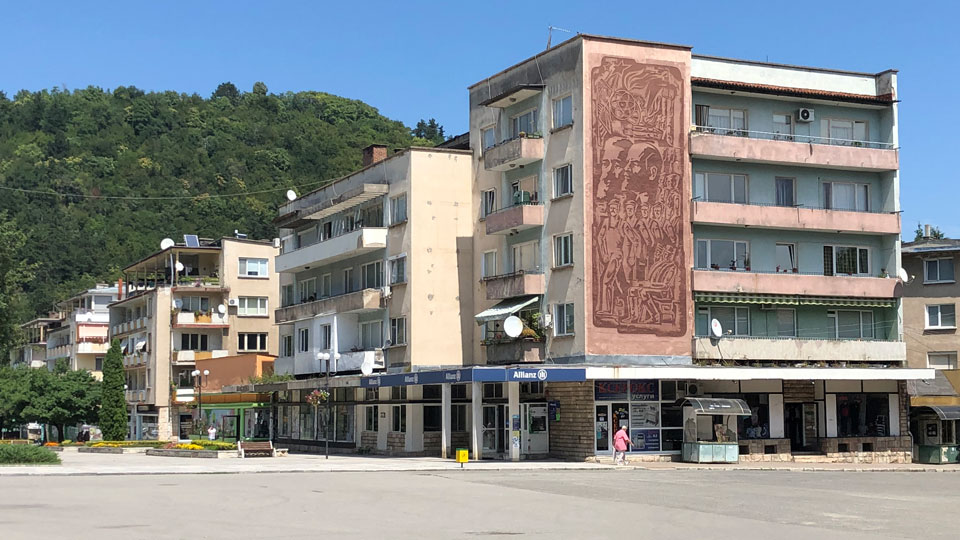
Tourism in Apriltsi Municipality
The town of Apriltsi is a small picturesque town, situated at the foot of the Balkan Mountains, encompassing part of the boundaries of the Central Balkan National Park.
Here is paradise on the Balkans. Each one of the many tourists who visit Apriltsi are fascinated by the unspoiled nature, the lush meadows alternating with steep forests and the high Balkans. On their way, accompanied by the sound streams, the song of the birds, the fresh air and the aroma of freshness, the tourists relive a mountain fairy tale.
Town, at the foot of the colossal Botev Peak, revealing the immense beauty of flora and fauna. Fauna invites each visitor to a brief adventure, acquaintance with the representatives of the animal world.
And as far as the population is concerned, it was called “Balkanians”. Why? Because they bent only when they needed to drink water. Surrounded by smiling, welcoming and well-meaning people, tourists enjoy a peaceful, home-like vacation.
Noteworthy Sights
Holy Trinity Girl Monastery
Not far from the city center is the Holy Trinity Virgin Monastery. It was built in the 19th century. The initiator of the creation was Peter Yonchev. Legend has it that he condemned his young daughter as an obedient to a monastery. As a child he sent her to the Kalofer Monastery. But the sadness for his birthplace was great, so he decided to organize the construction of a maiden monastery, so that he could bring his daughter here. The monastery was burnt and looted during the April Uprising. Thanks to the patriotic population, the monastery was rebuilt after the Liberation. The holy relics of the martyrs who were not inclined to their last faith are also kept here. If one asks, they can bow to their feat and ask for their holy intercession.
On April 3, 2011, the canonization of martyred nuns and priests in the monastery “St. Trinity ”. The icon depicting “St. Martyrs of Novosel ”. On May 9, 2011, the Bulgarian Orthodox Church celebrates for the first time the Council of St. Martyrs of Novosel. The traditional commemoration of the memory of martyred priests and nuns for their faith and people begins in the town of Apriltsi, in the Holy Trinity Novoselsky Monastery.
Church of the Holy Martyr George the Victorious
The Temple-Monument “St. vmhk. George the Victorious ”was built in memory of those killed in the April Uprising in 1876. The temple was built with state funds. A total of 15,000 golden leva is earmarked for the construction of the temple, which began in 1895. Annually the temple feast – May 6 – St. George’s Day is celebrated with guests who come from all over the country and other settlements. The Holy Liturgy is celebrated for the health, success and well-being of those present, a corbana and a fuel are given for the praise of St. George, to protect and guard against the troubles of Apriltsi.
St. Petka Paraskeva Church
St. Petka Paraskeva Church, Apriltsi, Novo selo is a cultural monument of national importance. The construction of the church dates back to the early Renaissance. In its architecture, it is characterized by being completely dug into the ground. The church is a “three-nave, one-apse pseudobasilic type building.” It also housed the first cellular school in Novo Selo ‘Looking’ ‘in its depths, any visitor could discover, a small part of the Revival spirit of April.
34 meter cross
Perched in the center of Apriltsi. Reaching the starry sky with its colossal 34 meters, a metal cross protects the Balkan town and its inhabitants. Built on the occasion of the 130th anniversary of the April Uprising and the 30th anniversary of Apriltsi being a city, on the initiative of a local businessman and thanks to its funding. During the day one can climb the steps of his metal structure and observe the bird’s-eye view of the huddled houses and small turns, and in the evening, just from those houses, one can enjoy the ” divine radiance ” of the Cross
The Black Monument in the Evil River Quarter
“In memory of the fallen 142 people in the anti-Turks battle in the Novoselsk Uprising from May 1 to May 9, 1876.”
This is the inscription that will welcome you shortly after you enter the town of Apriltsi. Written on a monument named ” The Black Monument ”. It was built in 1885. by Matthew Radil, a rebel participant who distinguished himself as a good shooter in the May 7 battle. He recalls the magnitude of the battles on May 4, 7 and 10.
The fountain of Kolyo Todorov Mateev
On May 9, 1876, the Bashibo-horde horde entered Novo selo (Apriltsi quarter). Kolyo Todorov Mateev is one of the many who stood out. The gunsmith decided to break the slave’s chains and show that he was a free Bulgarian. For all his audacity, this Novoselski Balkanjo Yovo is caught and cut short. At the place where his blood flowed, today there is a fountain with two reliefs – a central one with the image of a martyr and another – with two images of a lion The fountain – a monument was built in honor of the 90th anniversary of the Novoselskoye uprising by Petko Netsolov.
cheshmamMount of monument to Marin Serov
In the center of the Evil River neighborhood, Apriltsi, on the occasion of the 90th anniversary of the epic under Maragidik, a fountain was created – a monument with a brief information inscription: “In memory of Marin Syarov – acting rebel – courier 1876”. Although short, it makes people who have stopped quenching their thirst quench their sense of balladism in the writing of the quiet murmur of water.
A fountain monument in honor of the Novoselsk Uprising
Where the waters of the fountain flush in honor of the New Mutiny Uprising, in 1876 on May 2, the first rifles were cracked and a decision was made to declare a rebellion against five centuries of slavery. It was built on the occasion of the 90th anniversary of the uprising. The inscription on the front of the tap reads: “Here on May 2, 1876, the uprising against the Turkish yoke was announced.”
On the right of the tap is the oath of the Novoselsky rebels. On the left are the names of the revolutionary committee founded by the Apostle Vasil Levski: Nanko Ts. Pachnikov, Avram Draganov, Kolyo Ts. Pachnikov, Stefan Valkov, Dragno Stoychev, Valko Yonko
Monument dedicated to the Novoselsk Uprising
The monument was built on the occasion of the 100th anniversary of the Novoselsk Uprising and the proclamation of Apriltsi as a city. The conceptual design is by Prof. Dorosiev and the sculptor is Ivan Neshev. It is woven armed Chetniks with stubborn muzzles in the fight for freedom. The horizontal stones at the base symbolize the bursting of the Ottoman Empire.
Mark Semov memorial plaque in Vidima quarter
“Hit two diagonals on the map of Bulgaria – where their lines meet – that’s where my birthplace is … I might add – where are some of the most alert people God has given his eyes to see far, hands for everything to be with them, heart for all news. Who has not looked from the Mihovtsi, Cherni Vrah and Marishnitsa neighborhoods to the Balkan Mountains may have traveled the world – few have seen. Whom the sun did not welcome early in the morning on the mowed meadows or on the paths to Maragidik and Botev, he does not know one of the greatest pleasures – to be alive and to enjoy life. He who has eyes and soul, heart for love and love for heart – to come. He will come and go no more than this land which God has designated for his loved ones. “Marko Semov
Monument to Ivan Marangozov
“I do not feel myself able to describe the works of the fighters in the paint they deserve; but with the pretense that almost nothing has been written about them, though 25 years have passed since that glorious time for us, I said at least to gather the facts As a teacher in Novo Selo for seven years, I had the opportunity to gather the facts and recognize the truths of the brags, and in this regard, it was even easier for me to meet the other living supporters of the villages of Batoshevo, Stolt, Kruvenik and Novo village during their social meetings … ”
Ivan Marangozov
Monument to the fallen soldiers of Ostrets in the town of Apriltsi
It was built in 1927 by an initiative committee to commemorate the killed and killed soldiers from Ostrets village (now the quarter of Apriltsi) in the national liberation wars of 1912 – 1918. The monument was originally in the center of Ostrets, in front of the community center, but later its relocation is required. It lists all the names of those killed during this period. Made by local stonemasons, Todor Petkov Balaburski and his son Sabi Balaburski.
Monument to Tsanko Dustabanov’s Company
It is located at the peak of Mara Gidik in the town of Bunarya, erected by the company of the reserve officers in Gabrovo. It was built in 1936 to commemorate the fallen rebels of Gabrovo and Novosel in the last battle on May 11, 1876.
Eco-Paths in Apriltsi Municipality
Ecopath “Vidimsko spray”
The Vidimsko Praskalo Eco-Trail is located south of the Vidima Quarter in Apriltsi. It is built by the Central Balkan National Park Directorate as a sightseeing tourist route, which introduces the park and one of its reserves – North Dzhendem. It runs parallel to the Prskalska River, crossing it at 5 places where bridges are built, passing through centuries-old beech forest and leading to rock walls, from which the 80-meter waterfall Vidimsko Praskalo descends.
The route offers an interpretative program introducing animals, plants, forests, pastures and waters to the park, as well as highlights of local history. A green classroom is provided for introducing children to the residents of the park. The visitor’s infrastructure provides a safe stay – the route is marked on the terrain, there are 5 wooden bridges over the Pruskalska River and two viewing sites – towards the river and the Vidimsko Pruskalo. with a total length of -13.9 km.
Water holes route
Situated south of Vidima quarter of Apriltsi. The route starts from Apriltsi, Vidima quarter, to the right from HPP to Mazaneto locality. From there, take the x path. Pleven and after about 500m you reach the fork in the winter and summer path for the hut. At 20m above it goes to the left intersects the ravine. The road continues upwards to a small meadow. About 20 meters above the clearing is a branch for x. Pleven and the Water holes cave. Return to the fork for x. Pleven is the same way. There are two directions of movement through the summer path and the winter path. The route offers visitors an educational program on topics – caves, cave dwellers, the North Dzhendem Reserve and landscape.
The route offers a stroll in Central Balkan National Park and one of its nine strict reserves – North Dzhendem. This is the highest reserve in the park and preserves unique flora and fauna.
The main focus of the interpretive route is one of the most important for the bat caves in Bulgaria the Water holes. You will learn more about caves and the secrets of life in them.
The passage has a total length of 13.90 km.
“On the Road of the Balkans” and “Nature Finders”
The Road to the Balkans
The Balkan Road route passes through the Stokite Park section of the Central Balkan National Park. It presents the topic of the Balkan people and their connection to the mountain. The trail starts at the Turki Dol alluvium with the Prussian River at about 840 m above sea level and along the Turkish route the ascent goes up to 1 372 m. The passage is about 9.5 km long and lasts about 6 hours.
The marked trail takes you to one of the most interesting protected areas in Bulgaria, introduces you to Central Balkan National Park. These lands have long been called the cradle of Bulgaria and a repository for our national culture. The “Balkan Road” route follows the footsteps of these proud Balkan mountaineers, discussing their settlements and the specifics of the Balkan lifestyle, their lifestyle and culture.
The hike is about 5.07 km long.
Duration of the route is about 3h.
It starts from the town of Apriltsi, Vidima quarter, along the ridge of Turski rid. From there it goes along the Pandush Trail, crosses the Turski Dol and after passing through the forest reaches a small clearing of Ilchov Sredok. From there, after a horizontal downhill transition, it reaches a slight descent. The pigs. There the path is divided into two. One route leads to the Jackal of Turski Dol and the beginning of local. The barn. The other route continues to the Tsanko Dustabanov monument. From here the route can be turned back to local. Sows and early local The barn or continue along the path to Ostrets.
Nature Trackers Route
From the Nature Seekers route, you will find that tracks in nature are all sometimes very small and little visible evidence of the existence of life around us, of the relationships between living beings and their connection with inanimate nature.
As we move along the path, we will pay more attention to the mammalian footsteps. Anything that can give us information about the nature around us and human intervention in it will be closely monitored. Thanks to the plates and guides, you will feel like an investigator on the path of important discoveries, and the saddle will bring you back more than a millennium back in time for the first Bulgarians, who, from the height of their horse, slowly progressed on their way to conquering new territories, relying on the most important traces for them in nature.
“Manuili – Interview with Arthropods” and “Saint Elijah Tells and Predicts”
“Manuilla – Interview with Arthropods”
Starts from Apriltsi / sq. Ostrets direction street “Rusaliysky passage” – mah. Boevtsi 1 km to the left. The route continues ascending towards the Manuili area. The route continues about 800 m in the direction of Ostrets Quarter with stone pavement.
Did you thank the arthropods today? Such a question will startle everyone. Why should we pay attention to beetles, spiders or fast-moving millipedes?
The Arthropod Interview route will tell you about these animals, and together we will thank them for having them. You will find out why we live in the insect era today and what other animals we should honor. As close friends. Many of your Why ? will disappear quickly. When you get to know them more closely.
Duration of the route – about 2 hours.
Saint Elijah Tells and Predicts Route
Located from the center of the town of Apriltsi in the direction of “Virgin Monastery”, it continues to the fork of a stone bridge to the left in a mah. Perovtsi, mach. “Pig’s Glade”, leads to a fountain with a gazebo and picnic area, 2 suspended water pools. It continues after a sharp turn and a branch of the asphalt road to the left to the St. Iliya locality. Near it there is a radio transmission center of the town of Apriltsi.
According to popular belief, St. Elijah is the master of thunder and lightning. He crosses the clouds with his chariot harnessed by fast horses, whose hooves are hoofed with gold. Sparks emerge when crossing the celestial cobblestone (clouds) and hammering.
Duration of the route – about 2 hours. / 3 km /
Horseback Riding:
Main route – Riding is on relatively flat terrains It starts from a horse base, Apriltsi, Ostrets district, mah. Sabevtsi -, Kovashka and Sabevska streets. Goes through. Somlevtsi. The route diverts to the right, passes through local. Great tomb, loc. Enchevska Mound, Sedlot Peak, Ribnaya Reka River, Penkina Str. Boevtsi – turned to Stykov’s cup to a local. The limit. From here it continues in a direction over Manuili, reaching a stroke. Boevtsi, along Hunting chalet, on a dirt road along Ostrets quarter to a horse base, ma. Sabevtsi.
Duration of the route – 4.30 hours.
The transition is 33.206 km long.
Secondary route – The ride is on relatively hilly terrains, along old forest roads and terrains. Sabevtsi – before the fork in the swing. Somlevts to the right – Mah. Bookers through local The Great Mound – Enchevska Mound – Saddle Mountain. Descent from Sedlot Peak – along the river Ribna – loc. Penkina Starchy, Koin Azmak, Green Meadow. Going back to the horse base Sabevtsi.
The route takes about 4 hours.
The crossing is 10,742 km long.
Third Step Route – Starts from Ostrets Horse Base, Mah. Sabevtsi ”. Reaching the Mach hunting lodge. Pepper, stroke. Lunch and rest at the Holy Trinity Virgin Monastery. Along the Ostreshka River and return back to the horse base max. Sabevtsi.
The length of the route – 4.30 min.
The crossing is 16,264 km long.
* * *
BIKE ROUTES:
Bicycle route: One day excursion with 6 hours duration. Starting point Apriltsi – Center – Zla Reka Quarter, Vidima Quarter, Vidima Hydro Power Plant is by asphalt road. The descent from the Vidima Hydroelectric Power Station is a dirt road through the local. Marina to x. Dawn.
The length of the route – 19,525 km.
Cycling route: Panoramic route. Travel time is about 2.30 min. It is suitable from early spring to late autumn. In dry weather. Starting point Apriltsi – downtown, the monastery “St. Trinity ”, Apriltsi Hotel reaches a stone bridge, to the right in front of it, in a stroke. Dolni Sholiatsi, mach. Hatyuvtsi, Mah. Pepper, Hunting Hut, Mah. Pazderi and reaches the district of Ostrets. The route passes through woodland and colorful meadows.
The transition is 13,174 km long.
Cycling route: Easy and enjoyable route for cyclists without special training. It takes 4-5 hours to get there with a picnic organization. It is convenient for use from early spring to late fall. The route reaches a cold mineral spring with a picnic area. Starting point of Ostrets Quarter, mineral spring – max. Boevtsi – Ostreshka River
The crossing is 19,122 km long.
- Kom Peak At 2016 m (6614 ft), the highest point in the region. 90 minute walk from Kom Hut. Panoramic views from the starting point of the Kom to Emine trek (European E-3 long distance trail.)
- Zdravchenitsa Peak Hike up to the summit at 1176 m (3858 ft). Trails from Berkovitsa town and Chereshovitsa.
- Haiydushki Waterfalls Hike beside streams and cascades to reach the waterfalls.
- Klisura Monastery A working monastery founded in the 13th century.
- Siniya Vir The Blue Pool. A favorite local spot for trout fishing.
- Ashiklar Mountain meadows for walking and picnics. Close to Berkovitsa town.
- Kaleto Nature Park For outdoor excursions. Roman fortress ruins found on the hill.
Museums in Berkovitsa Municipality
Berkovitsa Ethnographic Museum
Ivan Vazov House Museum
Klisurski Monastery Museum
Famous People from Berkovitsa Municipality
Timo Angelov Revolutionary
Georgi Bliznakov Chemist
Donyo Donev Animator
Pavlina Filipova Athlete
Valentin Naydenov Ivanov Athlete

Aksakovo • Alfatar • Anton • Antonovo • Apriltsi • Ardino • Asenovgrad • Avren • Aytos • Balchik • Banite • Bansko • Batak • Belene • Belitsa • Belogradchik • Beloslav • Belovo • Berkovitsa • Blagoevgrad • Boboshevo • Bobov Dol • Bolyarovo • Borino • Borovan • Borovo • Botevgrad • Boychinovtsi • Boynitsa • Bozhurishte • Bratsigovo • Bratya Daskalovi • Bregovo • Breznik • Brezovo • Brusartsi • Burgas • Byala (Ruse) • Byala (Varna) • Byala Slatina • Chavdar • Chelopech • Chepelare • Chernoochene • Cherven Bryag • Chiprovtsi • Chirpan • Chuprene • Dalgopol • Devin • Devnya • Dimitrovgrad • Dimovo • Dobrich • Dobrichka • Dolna Banya • Dolna Mitropoliya • Dolni Chiflik • Dolni Dabnik • Dospat • Dragoman • Dryanovo • Dulovo • Dupnitsa • Dve Mogili • Dzhebel • Elena • Elhovo • Elin Pelin • Etropole • Gabrovo • Galabovo • Garmen • General Toshevo • Georgi Damyanovo • Glavinitsa • Godech • Gorna Malina • Gorna Oryahovitsa • Gotse Delchev • Gramada • Gulyantsi • Gurkovo • Hadzhidimovo • Harmanli • Haskovo • Hayredin • Hisarya • Hitrino • Ihtiman • Iskar • Isperih • Ivanovo • Ivaylovgrad • Kaloyanovo • Kameno • Kaolinovo • Kardzhali • Karlovo • Karnobat •Kaspichan • Kavarna • Kaynardzha • Kazanlak • Kirkovo • Knezha • Kocherinovo • Koprivshtitsa • Kostenets • Kostinbrod • Kotel • Kovachevtsi • Kozloduy • Kresna • Krichim • Krivodol • Krumovgrad • Krushari • Kubrat • Kuklen • Kula • Kyustendil • Laki • Lesichovo • Letnitsa • Levski • Lom • Lovech • Loznitsa • Lukovit • Lyaskovets • Lyubimets • Madan • Madzharovo • Maglizh • Makresh • Malko Tarnovo • Maritsa • Medkovets • Mezdra • Mineralni Bani • Mirkovo • Miziya • Momchilgrad • Montana • Nedelino • Nesebar • Nevestino • Nikola Kozlevo • Nikolaevo • Nikopol • Nova Zagora • Novi Pazar • Novo Selo • Omurtag • Opaka • Opan • Oryahovo • Panagyurishte • Parvomay • Pavel Banya • Pavlikeni • Pazardzhik • Pernik • Perushtitsa • Peshtera • Petrich • Pirdop • Pleven • Plovdiv • Polski Trambesh • Pomorie • Popovo • Pordim • Pravets • Primorsko • Provadiya • Radnevo • Radomir • Rakitovo • Rakovski • Razgrad • Razlog • Rila • Rodopi • Roman • Rudozem • Ruen • Ruse • Ruzhintsi • Sadovo • Saedinenie • Samokov • Samuil • Sandanski • Sapareva Banya • Sarnitsa • Satovcha • Septemvri • Sevlievo • Shabla • Shumen • Silistra • Simeonovgrad • Simitli • Sitovo • Sliven • Slivnitsa • Slivo Pole • Smolyan • Smyadovo • Stolitsa • Sopot • Sozopol • Sredets • Stamboliyski • Stambolovo • Stara Zagora • Straldzha • Strazhitsa • Strelcha • Strumyani • Suhindol • Sungurlare • Suvorovo • Svilengrad • Svishtov • Svoge • Targovishte • Tervel • Teteven • Topolovgrad • Tran • Treklyano • Troyan • Tryavna • Tsar Kaloyan • Tsarevo • Tsenovo • Tundzha • Tutrakan • Tvarditsa • Ugarchin • Valchedram • Valchi Dol • Varbitsa • Varna • Varshets • Veliki Preslav • Veliko Tarnovo • Velingrad • Venets • Vetovo • Vetrino • Vidin • Vratsa • Yablanitsa • Yakimovo • Yakoruda • Yambol • Zavet • Zemen • Zlataritsa • Zlatitsa • Zlatograd


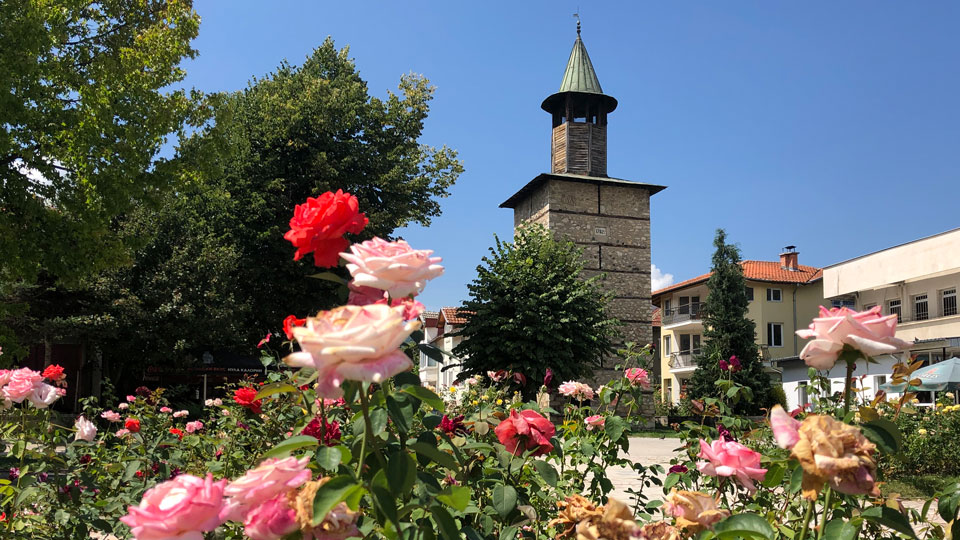

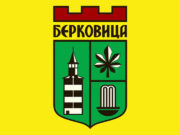
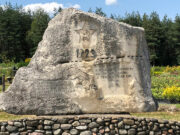
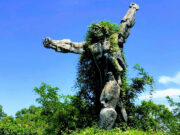

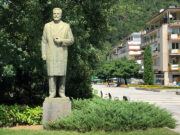
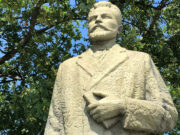

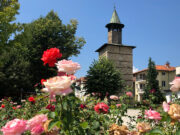
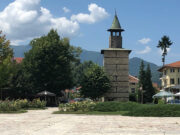
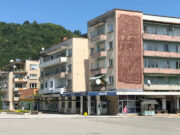


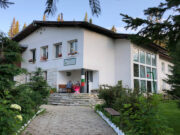
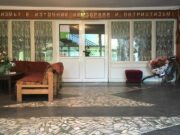
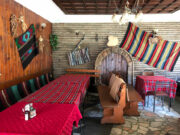

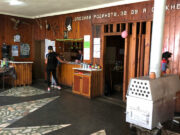
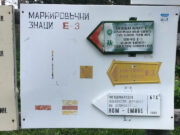
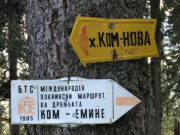

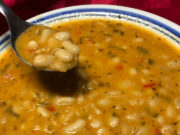
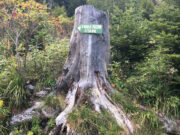
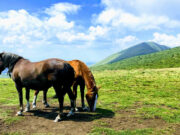

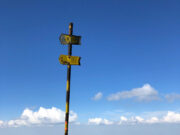

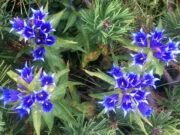
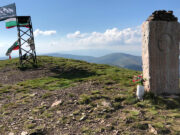

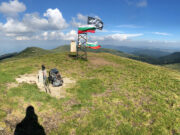

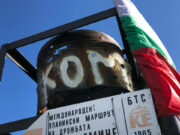


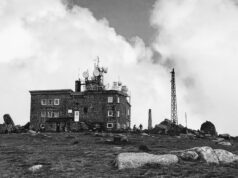
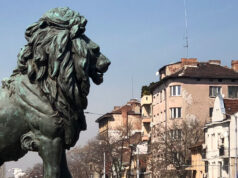

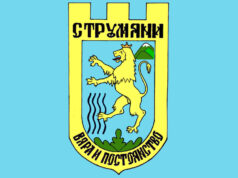

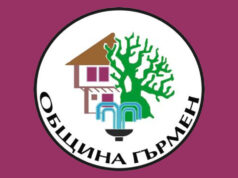
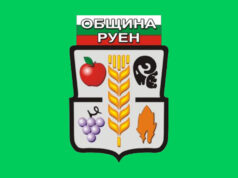
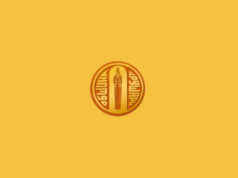
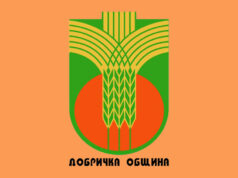

[…] Alfatar • Anton • Antonovo • Apriltsi • Ardino • Asenovgrad • Avren • Aytos • Balchik • Banite • Bansko • Batak • […]
[…] Ahtopol • Aksakovo • Alfatar • Antonovo • Apriltsi • Ardino • Asenovgrad • Aytos • Balchik • Balgarovo • Bankya • Bansko • Banya • […]
[…] Ahtopol • Aksakovo • Alfatar • Antonovo • Apriltsi • Ardino • Asenovgrad • Aytos • Balchik • Balgarovo • Bankya • Bansko • […]
[…] Ahtopol • Aksakovo • Alfatar • Antonovo • Apriltsi • Ardino • Asenovgrad • Aytos • Balchik • Balgarovo • Bankya • Bansko • […]
[…] Ahtopol • Aksakovo • Alfatar • Antonovo • Apriltsi • Ardino • Asenovgrad • Aytos • Balchik • Balgarovo • Bankya • Bansko • […]
[…] Ahtopol • Aksakovo • Alfatar • Antonovo • Apriltsi • Ardino • Asenovgrad • Aytos • Balchik • Balgarovo • Bankya • Bansko • […]